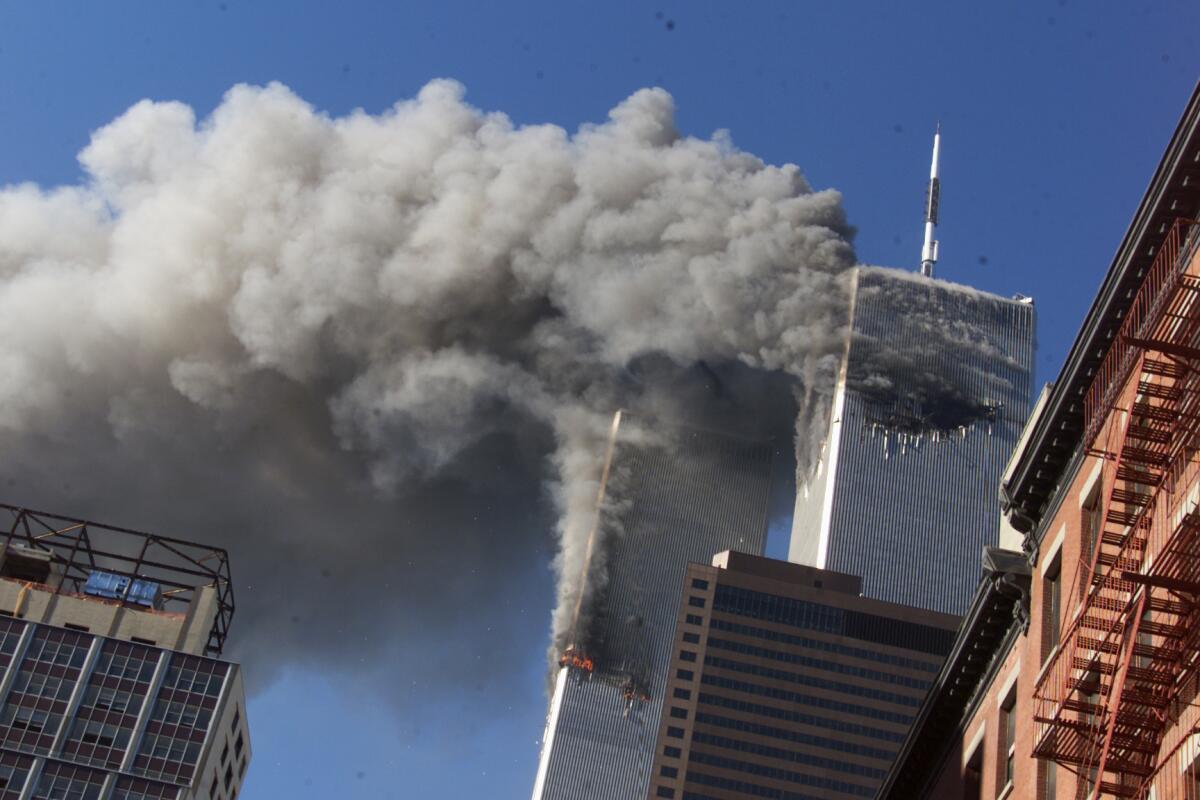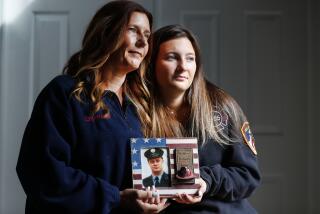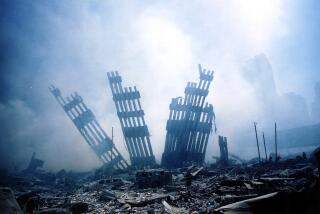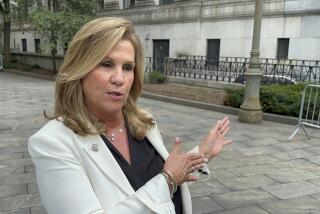Editorial: The hole in America’s heart

On Sept. 11, 2001, a hole was torn in the heart of America.
Nineteen young men armed with knives and box cutters hijacked four jetliners, crashing two of them into the twin towers of the World Trade Center and a third into the Pentagon. A fourth plane — most likely bound for the U.S. Capitol — crashed into the ground in Shanksville, Pa., downed by courageous passengers. Nearly 3,000 people perished. It was a calamity on the scale of Pearl Harbor.
Today, a generation of college students and young adults has no memory of this terrorist attack. In Afghanistan last month, Marines served and died in a war that had lasted their entire lives, a war in which some of their parents also served.
The 20th anniversary of 9/11 arrives as an exhausted America is trying to emerge from an intersection of calamities: a pandemic that has claimed more than 645,000 lives in the United States, a worsening climate crisis that threatens the West with drought and wildfires and coastal communities in the Southeast and on the East Coast with hurricanes and sea-level rise, and growing discontent with policies that have worsened inequality and racial injustice. The end of the Afghanistan war is only one of many dreary headlines.
These overlapping crises, and the passage of time, help us to put 9/11 in context and perspective. In attacking the symbols of America’s wealth and power, Al Qaeda terrorists brought to horrific fruition their version of jihad and the tangle of grievances nurtured over decades by their extremist leaders, above all Osama bin Laden. The tragedy sparked tremendous acts of courage and sacrifice, a worldwide outpouring of sympathy and a surge of unity and patriotism. But over the years that followed, the wounds have never fully healed as the nation has gone through a barrage of stress and trial.
Since 2001, the planet has warmed. Digital technology has exploded. The population of the United States has grown by 15%, mostly because of immigration. America’s politics have become more toxic. Our trust in institutions, in leaders and, most importantly, in one another has eroded. The global drive toward freedom, which many Americans took for granted when the Cold War ended in 1989, stalled and then went into reverse. History did not end; it returned with a vengeance.
Crime of the century
The slaughter of nearly 3,000 Americans rightly triggered a multilateral, transnational manhunt targeting Al Qaeda everywhere it had operations, including Afghanistan. Terrorist cells needed to be rooted out, and their sources of funding, materiel and logistics cut off.
But in the months to come, President George W. Bush’s young administration treated 9/11 like Pearl Harbor, an act of war between states.
That was a mistake in hindsight. There is no doubting the sophistication of Al Qaeda, a sprawling multinational network with a complex web of logistics and financing, charismatic leaders and a long track record of attacks on the U.S. Al Qaeda terrorists killed six people in a 1993 bombing at the World Trade Center; 19 soldiers in an attack on a U.S. military housing complex in Dhahran, Saudi Arabia, in 1996; 224 people in simultaneous bombings of the U.S. embassies in Nairobi, Kenya, and Dar es Salaam, Tanzania, in 1998; and 17 American sailors in a bombing of the U.S. warship Cole off the coast of Yemen in 2000.
A notorious intelligence briefing given to Bush on Sept. 6, 2001, five days before the attacks, was titled “Bin Ladin Determined To Strike in US.”
So the attacks hardly came out of nowhere. The 9/11 Commission later identified a failure of imagination. “We do not believe leaders understood the gravity of the threat,” the commission found. “The terrorist danger from Bin Laden and Al Qaeda was not a major topic for policy debate among the public, the media or in the Congress. Indeed, it barely came up during the 2000 presidential campaign.” Across numerous agencies — the CIA, FBI, Defense Department, Federal Aviation Administration — the government failed to make terrorism an overriding national concern and to degrade Al Qaeda’s capabilities. It missed multiple chances to thwart the 9/11 plot.
The attacks prompted huge changes in the operations of the federal government. The Department of Homeland Security was created, the most substantial reorganization of the government since just after World War II. Airport screening was federalized and placed under the control of a new Transportation Security Administration. The intelligence community was reorganized, the government’s eyes and spies now coordinated by a director of national intelligence. A National Counterterrorism Center was established, reporting to the director.
These changes, and the loyal, hard work of hundreds of thousands of public servants, have helped avert a similarly disastrous attack in the 20 years since 9/11, although violent Islamist extremism has continued to menace the West, with major attacks in Madrid in 2004, London in 2005 and Paris in 2015.
No innocence abroad
Overseas, however, the Bush administration did not wait for any commission before plunging America into warfare.
The Taliban militants, who controlled Afghanistan from 1996 to 2001 and have now retaken control of the country, were pitiless zealots who harbored Bin Laden and his associates. After they refused to turn over the Al Qaeda terrorists, it was right that a U.S.-led coalition, one that included our NATO allies, entered Afghanistan to overthrow the Taliban. But things soon went awry.
Bin Laden and some of his top associates were pinned down in a forbidding mountainous area known as Tora Bora, but somehow managed to escape as U.S. military commanders on the ground pleaded for more backup. Bin Laden ended up hiding out in Pakistan, where he would remain until he was killed by U.S. special forces on May 2, 2011. After Bin Laden escaped, the goals of the invasion became more muddied; the U.S. turned to a project of nation-building that was admirable in some ways but not realistic, nor mindful of Afghanistan’s fraught history with imperial occupiers. Even worse, the mission in Afghanistan was starved of resources as the White House turned its attention to Iraq.
It is clear, from numerous works of journalism and scholarship, that the Bush administration had been fixated on Saddam Hussein and looking for ways to justify a U.S. invasion of Iraq immediately after 9/11 — even though there is virtually no evidence connecting Hussein’s secular Baathist regime to the Islamist terrorists of Al Qaeda.
A nearly unanimous Congress — Rep. Barbara Lee (D-Oakland) was the sole, brave dissenter — gave Bush an almost open-ended authorization for use of military force against those who “planned, authorized, committed or aided” the 9/11 attacks. Over time, this broad, vague and indefinite mandate was used to prosecute a so-called global war on terror that led to disastrous consequences for the U.S., abroad and at home.
After the Taliban regime in Afghanistan was toppled in 2001, the U.S. and its allies met to constitute a new democracy, with a Marshall Plan-style commitment of aid for the reconstruction of the country. As a result, a generation of Afghans live longer and healthier lives, have learned to read, have become economically self-sufficient and have taken charge of their lives and destinies, particularly women and girls. Those accomplishments are commendable, but they are threatened by the Taliban’s return. The decision to exclude the Taliban from early negotiations about the future of Afghanistan was a mistake in hindsight.
So was the decision, in 2003, to dissolve the Iraqi army after Saddam Hussein was toppled. Having decapitated the Baathist regime, the Bush administration had no plan for keeping Iraq stable. Like Afghanistan, Iraq includes numerous faiths, tribes, factions and languages. Even its boundaries are artificial constructs, drawn as empires came and went. The situation in Iraq soon deteriorated into a civil war between Islamist Sunni radicals, including the deposed Baathists, and the Shiite majority of Iraq, which has close ties with Shiite Iran.
The staggering toll of the two decades of conflict since 9/11 are documented by the Costs of War project at Brown University’s Watson Institute for International and Public Affairs: around 930,000 deaths due directly to the violence of these wars, including 387,000 civilians killed; 38 million refugees or persons otherwise displaced; $8 trillion in costs to the U.S. government; counter-terrorism operations in 85 countries. And gross violations of human rights and civil liberties.
Tarnished ideals
Starting in January 2002, roughly 780 suspected terrorists captured overseas were detained in the military prison at Guantanamo Bay, Cuba. Some of them — notably Khalid Shaikh Mohammed, the Pakistani militant described as the architect of the 9/11 attacks — are proven murderers. But many, many others were held, without adequate legal representation or due process of law, on the flimsiest of pretexts. President Obama tried to close the camp, but Congress refused to allow terrorists like Mohammed to be tried in the U.S. Nearly 20 years later, almost 40 men remain imprisoned at Guantanamo Bay. Some have been charged or convicted with war crimes under a system of military commissions established to deal with their cases. Others are indefinitely detained, having neither been charged by the tribunals nor been recommended for release. About 10 remain detained pending transfers to other countries.
Guantanamo Bay remains a blot on America’s conscience. This unconstitutional netherworld should have been closed long ago. The most dangerous men held there — Mohammed; Walid bin Attash, a Yemeni who confessed to plotting the Cole attack; and Ramzi Binalshibh, also a Yemeni, who is accused of being a 9/11 plotter — should have been tried in federal courts long ago, convicted and sentenced to life in prison in maximum security. Others, for whom the evidence is not clear, should be released.
The entire war on terror, as organized by Bush’s vice president, Dick Cheney, and his hawkish allies like Donald H. Rumsfeld, the former Defense secretary, and Paul D. Wolfowitz, a former deputy secretary of Defense, ended up being a war on America’s values. CIA “black sites” and “renditions” of “enemy combatants” skirted or violated international law. The use of waterboarding and other torture methods — under the euphemism “enhanced interrogation techniques” — cost America the moral high ground. Meanwhile, the security state continued to expand, with the National Security Agency and other agencies asserting vast surveillance powers over phone, email and text communications of Americans and engaging in warrantless wiretapping.
To his credit, Bush was no Islamophobe. “The terrorists are traitors to their own faith, trying, in effect, to hijack Islam itself,” he told Congress on Sept. 20, 2001. “The enemy of America is not our many Muslim friends. It is not our many Arab friends. Our enemy is a radical network of terrorists and every government that supports them.”
That message was commendable, but sadly it was lost in many American communities, where immigrants and citizens of Arab, Middle Eastern or South Asian ancestry experienced a surge in post-9/11 discrimination and violence. Victims of many faiths — Muslim, Bahai, Sikh, Jain, Hindu and more — were persecuted. Bias crimes were investigated, but in the seedier parts of the online world, a hateful discourse began to brew. It went into overdrive during the presidency of Barack Obama — our first Black president, who had spent part of his childhood in Indonesia, a Muslim nation — and it crescendoed during the presidential campaign of Donald J. Trump, whose “Muslim ban” of 2017 showed just how much Islamophobia had become acceptable.
A saving grace
Did the terrorists win?
Al Qaeda foot soldiers believed the U.S. could be brought down by military attack, but other more sophisticated Islamist revolutionary thinkers and philosophers said that America could be brought down only by turning its institutions and founding principles against itself — freedom, democracy, justice.
Our profound internal debates — not only over war, security, surveillance, privacy and torture, but increasingly over our democracy itself — reflect how much more complicated, and torn, America has become over the past 20 years. Trust in institutions, experts and leaders, which had been eroding since the Vietnam War and Watergate, worsened after 9/11, contributing to the conspiratorial ignorance of today. The sense of being able to move about freely in the country without fear, whether realistic or not, has been compromised. Violations of international law and norms, and two largely futile wars, have corroded our collective soul.
And yet, dark as these two decades have been, all is not lost. For every American who has turned toward isolationism and nationalism, there are younger voters who cherish multilateral cooperation, respect ourinstitutions, care for our planet, and believe cooperation among peoples is the only true path to security. For every hate crime, there have been multiple acts of compassion and understanding. For every abuse of power, there have been advocates demanding that America live up to its principles. The threat of extremist violence remains real and must be confronted, but we know it can come from a number of sources — including the far right here at home.
The ground in Lower Manhattan, Arlington, Va., and Shanksville, Pa., was hallowed by the tragedies of Sept. 11, 2001. We honor the grace, dignity and memory of the nearly 3,000 souls lost that day by pushing forward a vision of a better America and a more just world.
More to Read
A cure for the common opinion
Get thought-provoking perspectives with our weekly newsletter.
You may occasionally receive promotional content from the Los Angeles Times.










